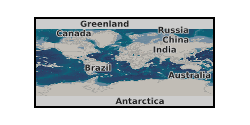Geophysical and transport properties of salt rocks during loading and exposed to dissolution (NERC Grant NE/X012751/1)
The dataset gather data from a dual experiment conducted to the study (i) the stress dependence of ultrasonic (elastic) waves and permeability of salt rocks, and (ii) the monitoring of controlled dissolution in an intact halite sample and a cracked (fractured) one. The tests were run in the high-pressure room-temperature (20°C) experimental setup for flow-through tests at the National Oceanography Centre, Southampton (NOCS) (Falcon et al. 2016). The rig consists of a triaxial vessel equipped with (i) ultrasonic sensors that allow measuring P- and S-wave velocities and their attenuation factors using the pulse echo method (McCann and Sothcott, 1992), and (ii) two rigs of electrodes embedded into the rubber sleeve of the pressure vessel for collecting electrical resistivity data that can be used to build up an electrical tomography of the sample (North el al. 2013). The rig has automatic control of both confining and pore pressure (ISCO EX-100D system). For the operating conditions and in homogeneous samples, the bulk electrical resistivity error is <1% for bulk resistivities <100 Ω m, increasing up to 5% with the degree of heterogeneity and above this resistivity value, at frequencies 1–500 Hz (North et al., 2013). Regarding the ultrasonic data, the technique and instrumentation used in this experiment provide velocity precision of ± 0.1% and accuracy of ± 0.3% (95% confidence), and attenuation accuracy of ± 0.1 dB cm-1 within the frequency range 300-1000 kHz (Best, 1992). The dataset presented here show the ultrasonic data at a single frequency of 600 kHz, obtained from Fourier analysis of broadband signals. Permeability to water and to N2 can be both determined with the aid of integrated flowmeters and pore pressure sensors both up- and downstream of the rock sample. The rock samples include: Pre-Cambrian salt (unknown well, Pakistan (source: www.likit.co.uk/)), Cambrian salt (unknown well, Tunguska Basin, Russia), Triassic salt (Arm Hill #1 well, NW Lancashire, UK), and Messinian salt (3A GN3 S02 well, core # 19, near Marianopoli, Sicily). 2.5 cm length, 5 cm diameter core plugs were extracted from precursor rocks, composition estimated by X-ray diffraction analysis, and connected porosity by He-pycnometry. Falcon-Suarez, I., North, L., Amalokwu, K., Best, A., 2016. Integrated geophysical and hydromechanical assessment for CO2 storage: shallow low permeable reservoir sandstones. Geophysical Prospecting 64, 828-847, http://doi.org/10.1111/1365-2478.12396. McCann, C., Sothcott, J., 1992. Laboratory measurements of the seismic properties of sedimentary rocks. Geological Society, London, Special Publications 65, 285-297, https://doi.org/10.1144/gsl.sp.1992.065.01.22. North, L., Best, A.I., Sothcott, J., MacGregor, L., 2013. Laboratory determination of the full electrical resistivity tensor of heterogeneous carbonate rocks at elevated pressures. Geophysical Prospecting 61, 458-470, https://doi.org/10.1111/j.1365-2478.2012.01113.x.

non geographic dataset
:
http://data.bgs.ac.uk/id/dataHolding/13608094
English
Geoscientific information
GEMET - INSPIRE themes, version 1.0:
BGS Thesaurus of Geosciences:
Underground storage
Dissolution
NGDC Deposited Data
Primary waves
Shear waves
Hydrogen
Rock salt deposits
Permeability
Ultrasonic tests
Free:
Free:
NERC_DDC
creation: 2023-08-08
2022-05-15
-
2023-02-01
National Oceanography Centre, Southampton
Ismael Falcon Suarez
,
United Kingdom
email:
not available
Role: originator
National Oceanography Centre
Michael Dale
email:
not available
Role: originator
British Geological Survey
Enquiries
email:
not available
Role: distributor
British Geological Survey
Enquiries
email:
not available
Role: point of contact
Data Quality
For the hydromechanical assessment: hydrostatic confining stress applied following the stress path: 5-10-5-15-5-20-5-30-5-50 MPa. Permeability to N2 and ultrasonic waves were measured at each stress, using the pore pressure transmission technique (e.g., Metwally and Sondergeld, 2011) For the dissolution tests: two samples were exposed to increasing pore pressure up to the constant confining pressure of 16 MPa, while the dissolution process was monitored with ultrasonic waves and electrical resistivity (i.e., decreasing effective stress). Water used for dissolution was a 3.5 wt.% NaCl brine solution Metwally, Y.M., Sondergeld, C.H., 2011. Measuring low permeabilities of gas-sands and shales using a pressure transmission technique. International Journal of Rock Mechanics and Mining Sciences 48, 1135-1144.
INSPIRE Implementing rules laying down technical arrangements for the interoperability and harmonisation of Geology
Commission Regulation (EU) No 1089/2010 of 23 November 2010 implementing Directive 2007/2/EC of the European Parliament and of the Council as regards interoperability of spatial data sets and services
Constraints
The copyright of materials derived from the British Geological Survey's work is vested in the Natural Environment Research Council [NERC]. No part of this work may be reproduced or transmitted in any form or by any means, or stored in a retrieval system of any nature, without the prior permission of the copyright holder, via the BGS Intellectual Property Rights Manager. Use by customers of information provided by the BGS, is at the customer's own risk. In view of the disparate sources of information at BGS's disposal, including such material donated to BGS, that BGS accepts in good faith as being accurate, the Natural Environment Research Council (NERC) gives no warranty, expressed or implied, as to the quality or accuracy of the information supplied, or to the information's suitability for any use. NERC/BGS accepts no liability whatever in respect of loss, damage, injury or other occurence however caused.
There are no restrictions on the use that may be made of the dataset, although an appropriate copyright acknowledgement must be made when any part of the dataset is reproduced. Either no third party data / information is contained in the dataset or BGS has secured written permission from the owner of any third party data / information contained in the dataset to make the dataset freely available without any use constraints - inclusion of any third party data / information will affect the copyright acknowledgement that needs to be made.
Metadata about metadata
027999d9-e626-03fe-e063-0937940ab53e
British Geological Survey
Environmental Science Centre,Keyworth,
NOTTINGHAM,
NG12 5GG,
United Kingdom
tel: +44 115 936 3100
email:
enquiries@bgs.ac.uk
Role: point of contact
2024-04-24
